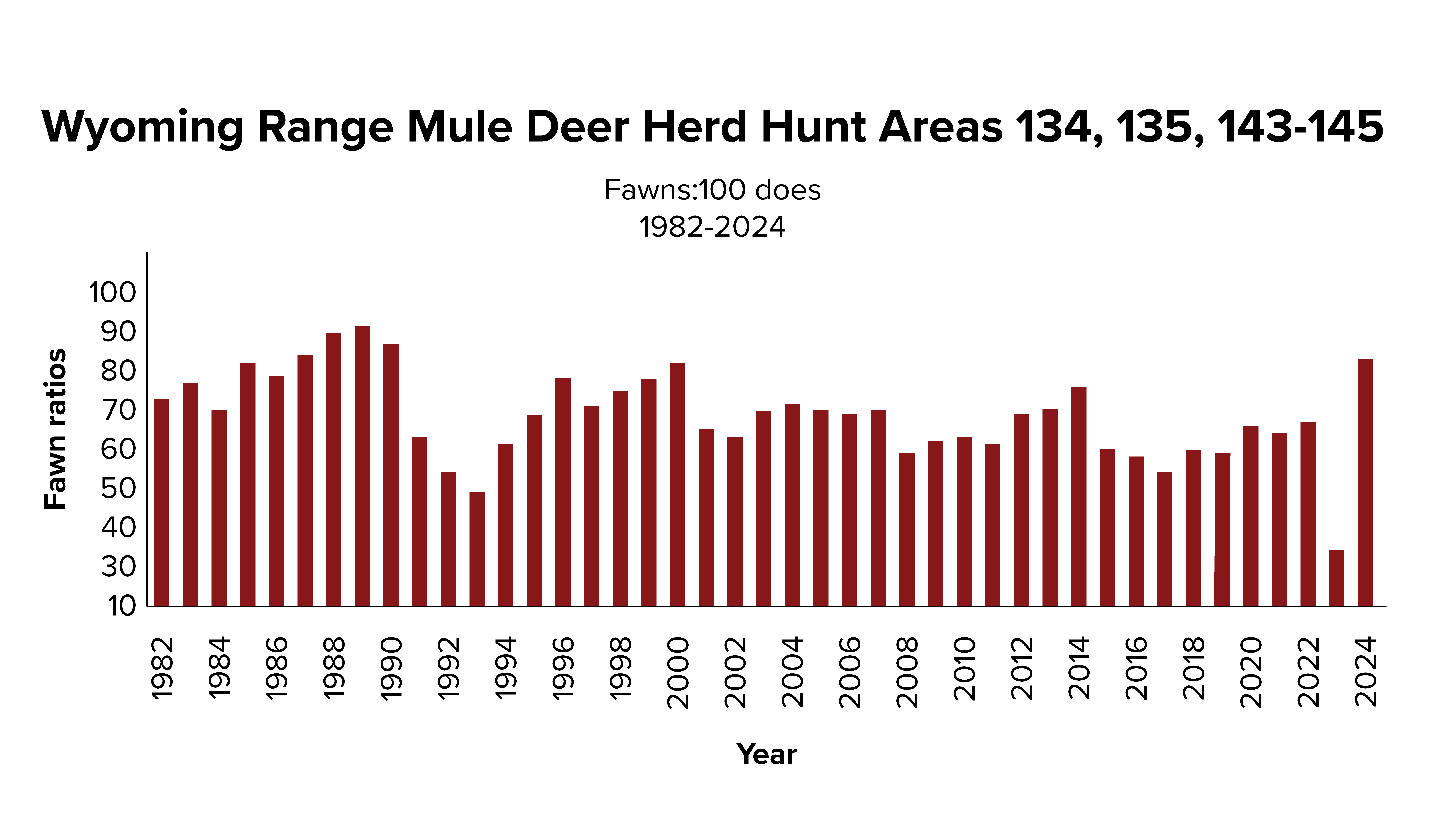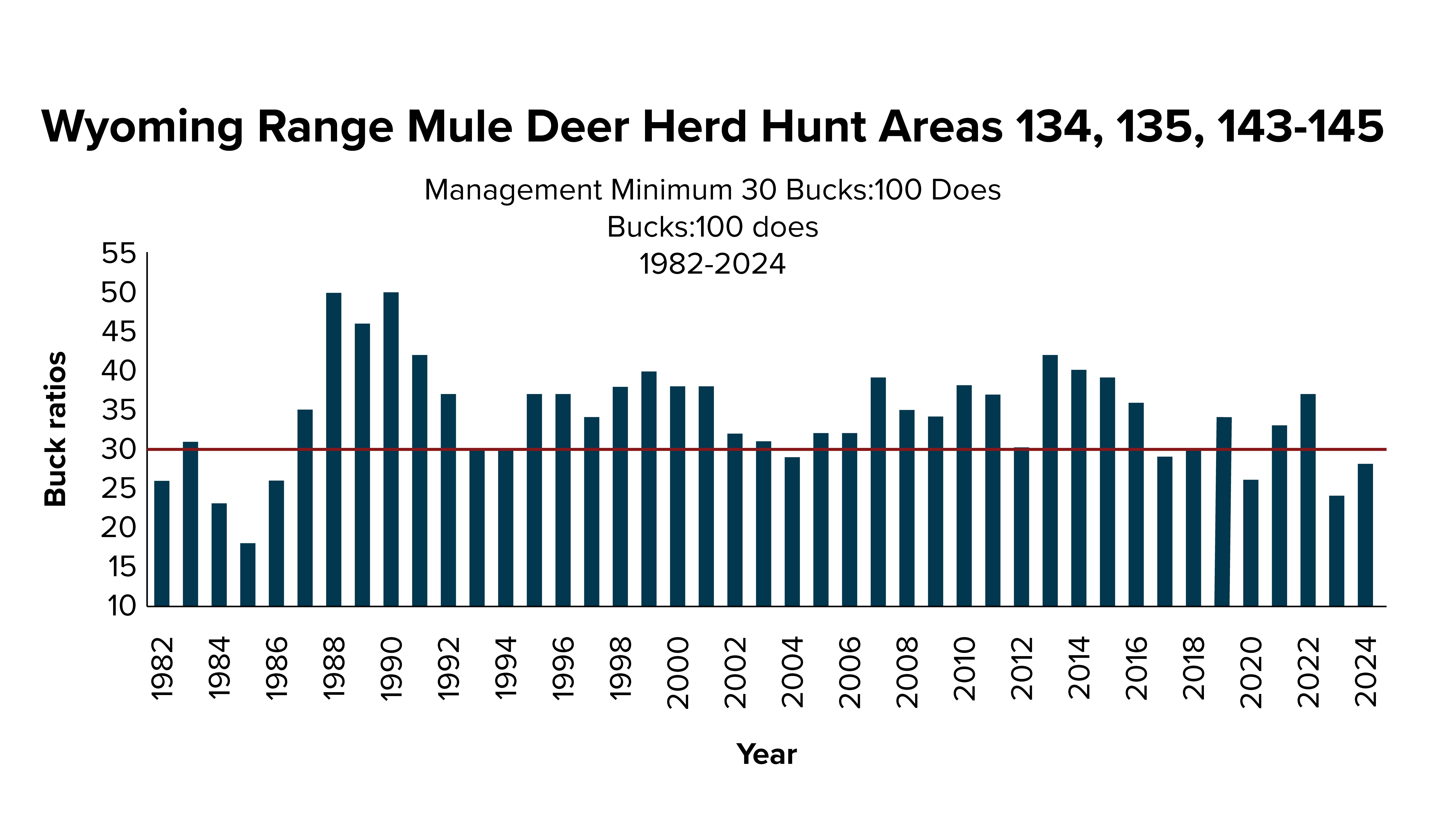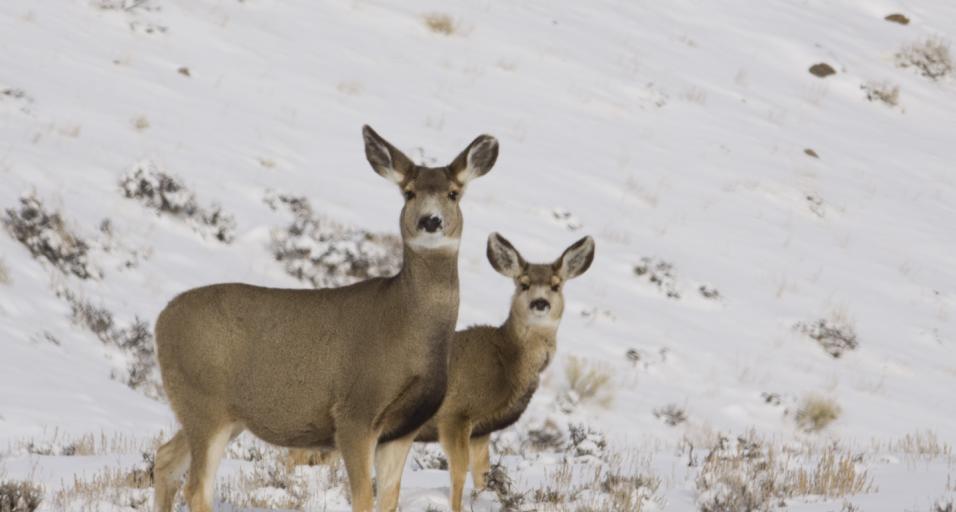JACKSON/PINEDALE – Each winter, Wyoming Game and Fish Department personnel conduct aerial surveys to assess mule deer populations. In late December, wildlife managers in the Jackson and Pinedale regions took to the sky to record classification data for the Wyoming Range and Sublette mule deer herds.
Managers continue to evaluate mule deer recovery in the Wyoming Range and Sublette herds following the severe winter of 2022-23, which resulted in above-average mortality. The data collected from these surveys, along with data from ongoing research, provide valuable insight into population trends and assist managers with hunting season recommendations.
Long-term research on mule deer in the Wyoming Range Herd, conducted in partnership with the Monteith Shop at the University of Wyoming, indicated mule deer entered this winter in very good body condition. The average body fat percentage of adult females captured during the fall of 2024 was 12.9%, a slight decrease from the average during fall 2023 of 15.8%, which was the highest recorded since the study began in 2013. Last summer, researchers captured fawns on the ground in the Wyoming Range. The average birth mass of newborn fawns was 7.7 pounds, the largest measurement recorded since 2016, and nearly 1 pound larger than average birth mass across all previous years.
South Jackson Wildlife Biologist Gary Fralick, takes body measurements from a newborn mule deer during summer research.
Weather patterns such as drought and extreme winters affect the quality and quantity of forage available to mule deer. Forage production and availability have significant impacts on the body condition of deer heading into winter.
“High precipitation zones that approach 30 inches or more on Wyoming Range mule deer summer ranges allow a diversity of plants to grow, which enables doe deer to produce and care for viable and healthy fawns before they migrate to winter ranges,” said Gary Fralick, Game and Fish south Jackson wildlife biologist.
Additionally, the relatively mild and snow-free winter conditions over the last two years have resulted in high over-winter survival.
“Deer are able to disperse over the entire winter range because of the low snow accumulations, and therefore maximize the use of forage at elevations that approach 9,000 feet on winter ranges,” Fralick said.
The high fawn crop and elevated survival rates heading into this winter were evident in the December aerial classification surveys. During these annual surveys, biologists and game wardens fly over winter ranges from a helicopter and tally the number of observed fawns, does, yearling bucks and adult bucks.
The population data for the Wyoming Range Herd includes hunt areas 134, 135 and 143-145. The December flight survey resulted in 4,902 mule deer counted and indicated a considerable increase in fawn ratios at 83 fawns for every 100 does, up from 34 fawns for every 100 does surveyed in 2023. These high fawn ratios are consistent with findings from the long-term research data that showed high survival of marked fawns last summer.

The overall buck ratio was up with 28 bucks for every 100 does. This is approaching the 30-45 buck-to-doe ratio objective. Yearling buck ratios increased to nine bucks for every 100 does, while adult buck ratios remained unchanged at 19 bucks for every 100 does. While the ratio of adult bucks remained stable, the increase in yearling bucks contributed to a rise in overall buck ratios for the herd.

In the Sublette Deer Herd, which includes winter ranges in hunt areas 130, 131, 138, 139, 140 and 142, biologists recorded 7,645 mule deer during the December flight survey. Similar to the Wyoming Range deer survey, there was a notable increase in the number of fawns observed. The classification survey indicated a fawn ratio of 76 fawns for every 100 does — the highest ratio observed since 2006.
The overall buck-to-doe ratio remains stable at 34 bucks for every 100 does, identical to the findings from 2023. The ratio of yearling bucks increased to 10 bucks for every 100 does, whereas the ratio of adult bucks decreased to 23 bucks for every 100 does.
"Both herds have demonstrated resilience in the past, quickly recovering from periods of high winter mortality. We witnessed this recovery in the mid-2000s and again from 2011-16 and 2017-22,” Fralick said. “During those times, the mild and open winter conditions led to high over-winter survival rates for mule deer and rapid recovery of the populations.”
As the Wyoming Range and Sublette herds continue to recover, wildlife managers will assess mule deer hunting season structures.
"As these herds recover, our hunting seasons will be adjusted to maximize opportunities while still meeting herd unit objectives, such as maintaining appropriate buck ratios," said Dean Clause, Game and Fish wildlife biologist for the Pinedale Region.
For more information about mule deer management in Wyoming, please visit the Game and Fish website.
– WGFD –

